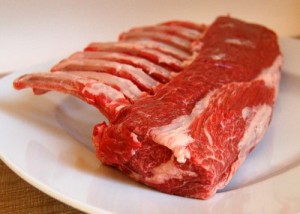A Revolution in Taste was profiled in The New Yorker just the other day!
Pinkard reveals that before the storming of the Bastille a revolution took place at dinner tables all over France, when ornate, liberally spiced medieval styles of cooking were displaced by farm-fresh food prepared so that it “not only tasted, but also looked, like what it was.” Le goût naturel is strikingly relevant to the way we eat today. For instance, the Newtonian physician George Cheyne, who pioneered a new science of dietetics, advocated the reduced consumption of corn-fed poultry and cattle and argued that vegetables be eaten according to the season. Pinkard relishes debunking persistent myths: champagne was not invented by a Benedictine monk named Dom Pérignon but, rather, caught on thanks to the invention and diffusion of the modern wine bottle. Her lively account concludes with a series of meticulously sourced ancien-régime recipes demonstrating the finesse with which French food is now synonymous.
 Those ancien-régime recipes are what I’ve been posting here over the past weeks. Part of that finesse lies in their simplicity. Getting it “right” is part ingredients, part practice. With that in mind, I turn to Thanksgiving. Whether or not you “celebrate” the holiday, what better way to spend a day than to cook? My problem: half my guests will be vegetarian. No giant bird for me. So I’m thinking that I’ll cook my holiday fall-back animal: lamb. I haven’t had any since my May trip to Scotland.
Those ancien-régime recipes are what I’ve been posting here over the past weeks. Part of that finesse lies in their simplicity. Getting it “right” is part ingredients, part practice. With that in mind, I turn to Thanksgiving. Whether or not you “celebrate” the holiday, what better way to spend a day than to cook? My problem: half my guests will be vegetarian. No giant bird for me. So I’m thinking that I’ll cook my holiday fall-back animal: lamb. I haven’t had any since my May trip to Scotland.
Below is a lovely recipe that Pinkard takes from Bonnefons, nice and simple to execute, but done right, looks heavenly.
As for the vegetarians, there’ll be plenty of veggies around, maybe last week’s beet dish.
After the jump: Roasted Rack of Lamb with Bitter Orange Deglazing Sauce
ROASTED RACK OF LAMB WITH BITTER ORANGE DEGLAZING SAUCE
BONNEFONS
Serves 2 (can be Doubled or Tripled, as the Size of Your Oven Allows)
This sauce is a variation on the bitter orange and garlic sauce Bonnefons recommended for chicken. Here he omits the garlic – a concession to the extremely delicate taste and texture of the whole baby lamb he specifies in the original recipe (Bonnefons, Les Délices de la campagne). The bitter orange sauce is delicious with ordinary lamb as well. Although I suggest pairing this sauce with a rack of lamb, it could easily accompany a roasted leg, too – just double or triple the ingredients for the sauce.
Equipment: A roasting pan just large enough to accommodate the lamb; a sharp knife for trimming the meat, if necessary; aluminum foil; a wooden spoon; and a warm serving platter or individual plates, heated.
A rack of lamb, about 1 1/4 pounds
Olive oil
Salt
Pepper
Juice of 1 lemon
Orange juice (enough to measure 1/2 cup when combined with the
lemon juice)
Optional: 1 green onion, finely minced
3–4 Tb butter, cut into 1/2 Tb pieces
Latest Comments
Have your say!